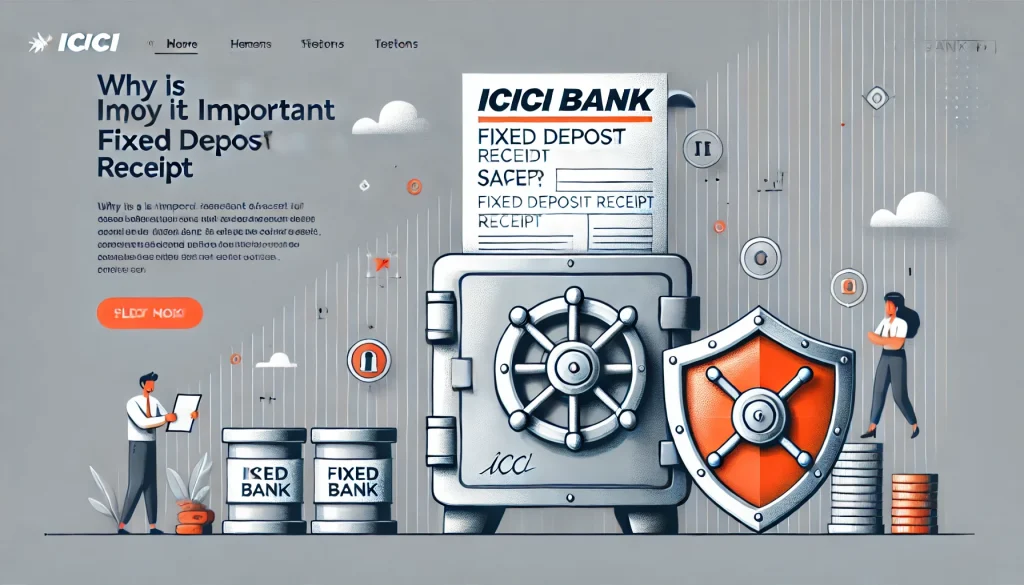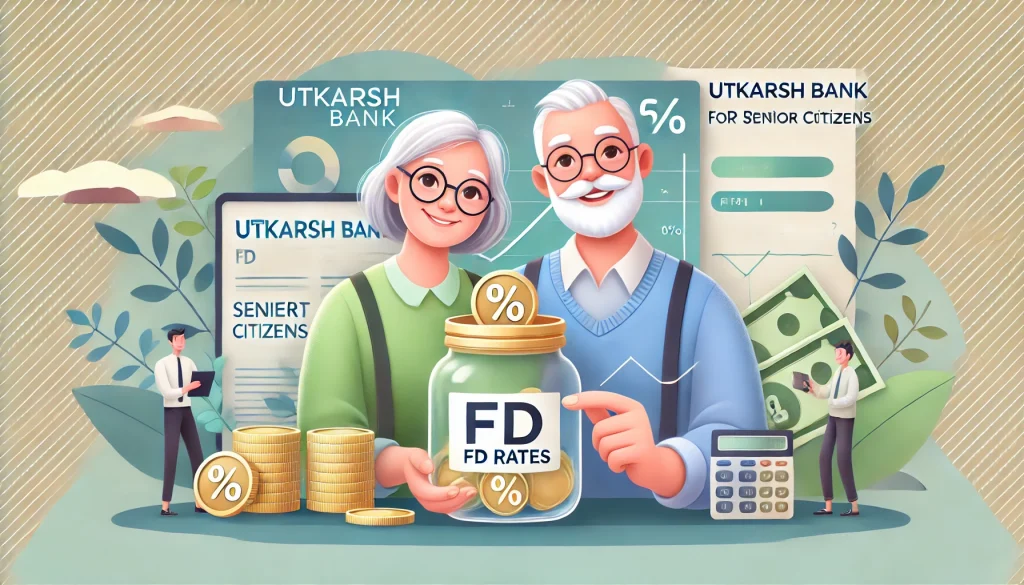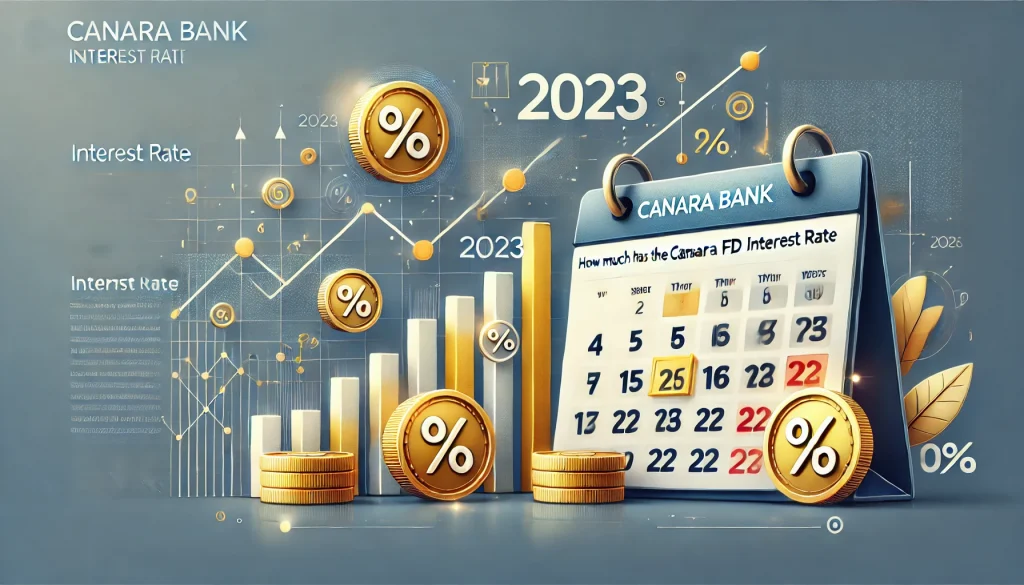
Fixed deposits, also known as term deposits, are a popular investment option in India. They are a type of investment where an individual deposits a sum of money with a bank or financial institution for a fixed period, usually ranging from a few weeks to 10 years. In return, the individual earns consistent FD interest rates on the deposited amount, paid out at the end of the tenure.
FD interest rates determine the return an individual will earn on their investment. Higher interest rates translate to higher returns, so comparing interest rates across different banks and financial institutions is important before making an investment decision.
We will explore fixed deposit interest rates in more detail, including how they are calculated, the factors affecting them, and the pros and cons of investing in fixed deposits.
Types of Fixed Deposits
Here are some common types of fixed deposits and the features offered by each:
- Regular Fixed Deposit: This is the most common type of fixed deposit, where an individual deposits money for a fixed tenure and earns steady FD interest rates. The minimum deposit amount and term may vary across banks and financial institutions.
- Senior Citizen Fixed Deposit: Individuals aged 60 years or above can opt for a Senior Citizen Fixed Deposit, which offers higher FD interest rates than regular fixed deposits. This makes it an ideal investment option for senior citizens who require a reliable source of passive income during their retirement years.
- Tax Saver Fixed Deposit: This type of fixed deposit is eligible for tax benefits under Section 80C of the Income Tax Act. Individuals can invest up to Rs. 1.5 lakh per financial year in tax saver fixed deposits and avail of tax deductions on the invested amount.
- Flexi Fixed Deposit: A Flexi Fixed Deposit is an ideal option for investors seeking flexibility in their fixed deposit investments. This type of fixed deposit allows individuals to deposit and withdraw funds as needed, with the added benefit of not affecting the FD interest rates on the remaining deposit.
How are Fixed Deposit Interest Rates Calculated?
Several factors, including market conditions, inflation, and the policies of individual banks and financial institutions, determine FD interest rates.
Here are some key factors to consider when calculating FD interest rates:
1. Annual Percentage Rate (APR) vs Annual Percentage Yield (APY)
FD interest rates are typically quoted as the Annual Percentage Rate (APR) or the Annual Percentage Yield (APY). The APR represents the interest rate earned on the deposit over one year, while the APY considers the compounding effect of interest earned on the deposit. Therefore, the APY is a more accurate representation of the actual return on investment.
2. Compounding Frequency
The frequency at which interest is compounded can significantly impact the final return on investment. Generally, the more frequent the compounding, the higher the return on investment. For example, a fixed deposit with quarterly compounding will earn more interest than one with annual compounding, even if the APR is the same.
3. The Tenure
The tenure of the deposit can also affect the FD interest rates earned. Typically, longer terms are associated with higher interest rates, as the bank or financial institution can use the deposited funds for a longer period.
4. Interest Payout Options
Fixed deposits offer different interest payout options, including monthly, quarterly, half-yearly, and annual payouts. The frequency of interest payouts can affect the FD interest rates earned on the deposit, with higher payouts generally resulting in lower interest rates.
Comparison of Fixed Deposit Interest Rates Across Banks in 2023
Here are the fixed deposit interest rates offered by some of the top banks in India as of March 2023:
| Bank | General Public | Senior Citizens | Tenure |
| State Bank of India (SBI) | 3.00% – 6.50% | 3.50% – 7.50% | 7 Days – 10 Years |
| HDFC Bank | 3.00% – 7.00% | 3.50% – 7.75% | 7 Days – 10 Years |
| ICICI Bank | 3.00% – 7.00% | 3.50% – 7.50% | 7 Days – 10 Years |
| Axis Bank | 3.50% – 7.00% | 3.50% – 7.75% | 7 Days – 10 Years |
| Kotak Mahindra Bank | 2.75% – 6.20% | 3.25% – 6.70% | 7 Days – 10 Years |
| Punjab National Bank (PNB) | 3.50% – 6.50% | 4.00% – 7.30% | 7 Days – 10 Years |
| Bank of Baroda | 3.00% – 6.50% | 3.50% – 7.50% | 7 Days – 10 Years |
| Canara Bank | 3.25% – 6.50% | 3.25% – 7.00% | 7 Days – 10 Years |
| IDFC First Bank | 3.50% – 7.00% | 4.00% – 7.50% | 7 Days – 10 Years |
| Yes Bank | 3.25% – 7.00% | 3.75% – 7.75% | 7 Days – 10 Years |
Factors Affecting Fixed Deposit Interest Rates
FD interest rates are not static and can fluctuate depending on various factors. Here are some of the main factors that can affect FD interest rates:
- RBI policies: The Reserve Bank of India (RBI) sets the benchmark interest rate, known as the repo rate, which impacts the interest rates offered by banks. When the RBI increases the repo rate, banks may also increase their fixed deposit interest rates to attract more deposits.
- Inflation rate: Inflation is the rate at which the general level of prices for goods and services is rising. When inflation is high, the purchasing power of money decreases, which can lead to higher interest rates to compensate for the loss of purchasing power.
- Competition among banks: Banks compete to attract deposits by offering higher interest rates. When there is intense competition among banks, they may increase their interest rates to attract more deposits and gain a competitive advantage.
Benefits of Investing in Fixed Deposits
Fixed deposits are a popular investment option in India due to the numerous benefits offered by them.
- Guaranteed returns: One of the biggest advantages of fixed deposits is that they offer guaranteed returns. The FD interest rate provided by the bank is fixed at the time of investment, which means that you can calculate your returns in advance and plan your finances accordingly.
- Low-risk investment option: Fixed deposits are a low-risk investment option compared to other investments such as stocks or mutual funds. Since the interest rate is fixed, there is no risk of losing money due to market fluctuations. This makes fixed deposits a popular choice among risk-averse investors.
- Tax benefits: Fixed deposits offer tax benefits under Section 80C of the Income Tax Act, 1961. Investments in tax-saver fixed deposits with a tenure of 5 years or more are eligible for a deduction of up to Rs. 1.5 lakhs in a financial year. Additionally, the interest earned on fixed deposits is taxable, but senior citizens can avail of higher tax exemptions.
- Flexible tenure options: Fixed deposits offer flexible tenure options ranging from 7 days to 10 years, allowing individuals to choose the duration of their investment according to their financial goals. Short-term fixed deposits are ideal for those who want to deposit their money for a short period, while long-term fixed deposits are suitable for those who want to earn a higher return on their investment.
Conclusion
Fixed deposits are a safe and reliable investment option for individuals looking to earn a fixed rate of return on their investment. They offer a low-risk investment option with guaranteed returns, making them an attractive choice for those looking to secure their savings. FD interest rates play a crucial role in determining the amount of return an individual will earn on their investment. Therefore, comparing interest rates offered by different banks and financial institutions is important before making an investment decision.
FAQs
The minimum amount required to open a fixed deposit account varies across banks and financial institutions. It can range from as low as Rs. 1,000 to as high as Rs. 10,000 or more.
The maximum tenure for a fixed deposit varies across banks and financial institutions. It can usually range from 5 years to 10 years.
Yes, you can withdraw your fixed deposit before maturity, but you may have to pay the penalty for premature withdrawal. The penalty amount varies across banks and depends on the tenure of the fixed deposit.
In a cumulative fixed deposit, the interest earned is added to the principal amount and paid out at maturity. In a non-cumulative fixed deposit, the interest earned is paid out at regular intervals, such as monthly or quarterly.
Disclaimer
This article is solely for educational purposes. Stable Money doesn't take any responsibility for the information or claims made in the blog.


